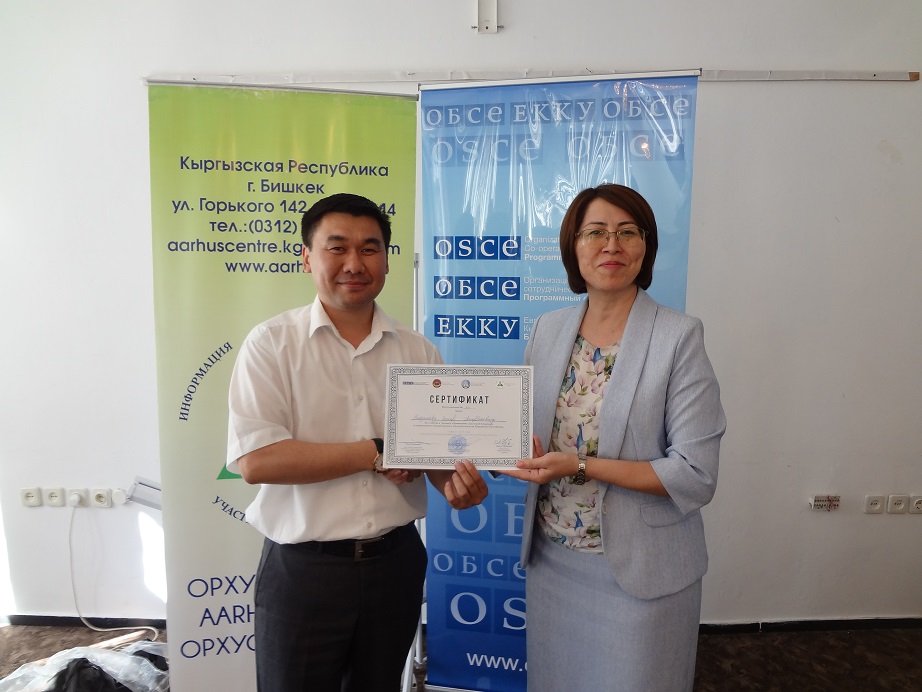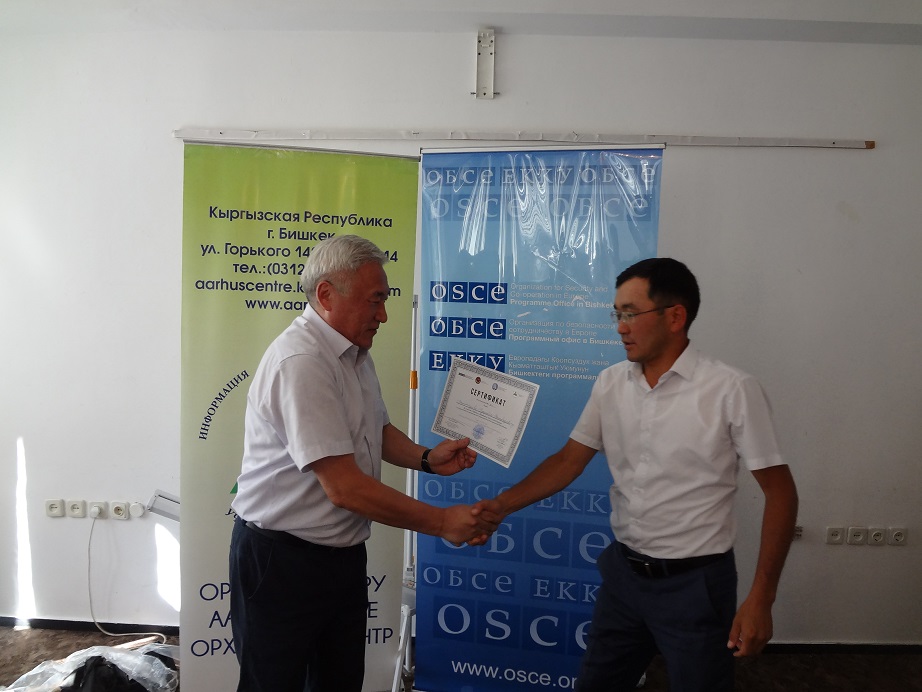The second stage of training in the field of justice is over

August 3 in the boarding house “Kyrgyz seashore” in Bosteri of Issyk-Kul district hosted 6th training for the judiciary of Kyrgyzstan. This training led to the completion of the 2nd stage of training on justice issues on the principles of the Aarhus Convention. During 3 years Centre orginized trainings for representatives of human rights organizations, NGOs in the field of ecology, students of law faculties and judges of regional courts, Osh and Bishkek. In total, the fundamentals of the Aarhus Convention have been trained for more than 120 judges, 12 students and 15 NGO representatives. Participants have been acquainted with the main regulatory legal acts of Kyrgyzstan in recent years

The main objective of these trainings was to introduce and explain how the principles of the Aarhus Convention can be used to protect the environmental rights of the population and to use them correctly in judicial proceedings. Also, during the training, the trainees got acquainted with the legislative acts in the field of environmental protection and the amendments introduced in recent years. All trainings were conducted by the consultants of the Aarhus Center in Bishkek Boltobaeva Venusa – a lawyer, legal expert and Arstanbaeva Dilara Erkinovna – a judge of the Supreme Court of Kyrgyzstan.

The training was conducted according to the approved program module by the Council of Judges of the Supreme Court of the Kyrgyz Republic and according to the program of the Higher School of Justice under the Supreme Court of the Kyrgyz Republic. The program was compiled on the basis of a signed Memorandum of Cooperation between the Aarhus Center of Bishkek and the Higher School of Justice of June 29, 2015. At the end of the training, each participant was given certificates of participation, which has a registration number of the Higher School of Justice, as well as a collection of the NAP in the field of the DUS of the KR for 2009-2016, a memo on the Aarhus Convention, training materials and other literature on environmental conservation.






























